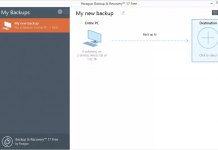
Marketing is all about reaching your target audience to serve them better and more effectively. It’s fancy talking about reaching a global audience, but why go so far when your neighborhood is already teeming with enough customers? That’s where location-based marketing comes in. Even better, the smartphone has put this strategy in the spotlight, turning it into a game-changer. According to a study by BIA Advisory Services, geo-targeted campaigns have used 26 million dollars in total just in 2019. The advances of geofencing technology also promise to make this technique a permanent and exciting feature of locally operating businesses.
What is Location-Based Marketing?
Location-based marketing refers to a strategy employed in direct marketing to alert mobile owners about nearby businesses or products. It makes use of the mobile device location to do this. This strategy enables businesses to reach targets at a personal level based on physical location. It also goes by many other names including geolocation marketing, location marketing, hyperlocal marketing, or proximity-based marketing.
Types of Location-Based Marketing
Location-based social media: this is the most common location-based marketing option. it is based on social media platforms such as Facebook, foursquare, or Twitter. They are notable for enabling two-way communication as well as direct contact with customers
Geo-targeted display advertising and text: this approach uses sponsored messages or paid placements/promotions on mobile media. Two options are available under this. Message targeting targets different users with different messages depending on their location. User targeting is used when marketers want to target users found in a particular geographic location.
Check-in based games and contests: this is where retailers reward users through discounts or coupons for visiting their locations or “checking in”
Tips to Leverage Location-Based Marketing in 2021 and Beyond
- Upgrade Your Game with Relevant and Personalized Marketing Strategies
Despite all the effort by businesses to make advertising campaigns attractive, studies based on customers’ perceptions show these have been largely unsuccessful. Most customers find these campaigns unappealing to them. Location-based marketing can be used to overcome this. According to stats, it’s 20 percent more effective compared to generic banner advertising.
- Find A Target Audience Specific Wants Or Needs
With geofencing, it becomes even easier to know your customers on intimate terms. This is because you are dealing with customers who are closer to home. This can be incredibly useful for your company. Why? Dominating in a crowded global market or huge urban area can be hard for your business. However, by strategically using location-based marketing, you can quickly become a sensation or a local legend in your street or suburb. The key is to do this by satisfying local needs and wants.
- Move to Hyperlocal Marketing
Hyperlocal marketing is the way you reach highly specific locations that are more geographically restricted. This can be within just blocks or streets. The goal is to direct foot traffic to physical areas using near-me searches. As an example, think of somebody who wants to buy a book but fails to find it from her favorite bookstore. It’s too much of a hassle to get back into her car and go around searching. So she pulls out her mobile and conducts a near me search for another bookstore. This convenience has made near me searches explode in scale and popularity.
- Building Smart Spaces
Devices like Amazon Alexa or Google Home (now Google Nest) are ways of creating smart spaces. These are physical environments through which people can use interconnected networks for engagement. Smart spaces are a powerful way for companies to engage customers. Companies can capitalize on them due to the ease they provide to remind customers to take certain actions on their products or services.
- Pick The Right Platform For Your Goals
Geofencing marketing is unique as it helps you identify the most effective platform. For example, according to research, 51 percent of travelers check into their hotels using their smartphones. To do this, 42 percent of them make use of mobile phone apps. Therefore by using location-based marketing you can put up displays of mobile notifications regarding flight bookings, times, and hotels.
- Mobile Marketing Campaign
With the growing adoption of smartphones, mobile phones are ideally suited for use in geofencing marketing. Using mobile app localization, it is easy to target your audience with mobile app content that matches the profile of customers or specific locations. For example, advertisements can be designed that apply to demographics or data points. This allows more effective delivery of relevant ads.
- Improve Customer Participation
Customers have become increasingly wary of sharing information, given concerns about privacy and data security. This can pose a challenge to marketers due to customers’ reluctance to share location information. Location-based marketing however can alleviate this problem because of the role of proximity marketing apps. Customers find these apps more acceptable because they are given complete control over what information is to be received via them. This can produce a win-win solution for both customers and companies. Customers only receive what they deem relevant to them, thus ensuring no wasted effort on the part of both the company and customer.
- Location-Based Augmented Reality
Today’s consumers are increasingly tech-savvy with a lifestyle heavily defined by the internet and smartphone use. They are also very particular about what they want via these avenues. For example, they expect a richer experience when receiving notifications. For a much smarter notification, marketers need to go beyond pin location and employ augment location based on user data. Augment location enables marketers to share a more personalized experience using consumer behavior patterns.
- Target Local Publication
Geofencing marketing can generate even wider awareness for you through local publications. By reaching out to locally popular publications, you can increase your audience through locally relevant content.
- Offer Surprise Discounts for Nearby Customers
Retaining an existing customer is cheaper and more efficient than winning new ones. Using check-ins, you can capitalize on geofencing marketing by rewarding loyal customers with discounts and other incentives.
Conclusion
If you are a brand with a physical location, location-based marketing can be an excellent strategy for you. It geofences locations to target visitors from these locations. This makes use of geo-targeting campaigns the natural option
Rather than relying on likes or follows which is the way social media generates engagement and builds its audience, geotargeting campaigns focus on real-world visits to your store or retail location. Whether your business is a grocery store or food and dining outlet, it pays to seize this as an opportunity for business success.










